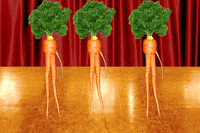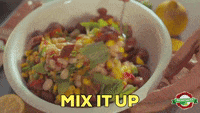LESSON 4026 Sat 10 Jul 2021
Do Good Purify Mind Attain Eternal Bliss
Overcome Hunger Illness as said by Buddha.
Let’s plant vegetables Broccoli, peppers 🫑 cucumbers 🥒 carrots 🥕 beans, fruit 🍎 🍉 slices in pots and all over the world.
Entire Earth is Amudha SURABI of Manimegalai.
Ashoka planted fruit bearing trees all over his empire.
30) Classical English,Roman,
All are kings of this world
10. With Poṭṭhapāda (Poṭṭhapāda Sutta) | Dīghanikāya - Part 1 (Sīlakkhandha Vagga)
10. With Poṭṭhapāda (Poṭṭhapāda Sutta) | Dīghanikāya - Part 1 (Sīlakkhandha Vagga)
By PHẬT GIÁO THERAVĀDA VN
Sutta Piṭaka -Digha Nikāya
DN 9 -
Poṭṭhapāda Sutta
{excerpt}
— The questions of Poṭṭhapāda —
Poṭṭhapāda asks various questions reagrding the nature of Saññā.
Note: plain texts
Now,
lord, does perception arise first, and knowledge after; or does
knowledge arise first, and perception after; or do perception &
knowledge arise simultaneously?
perception arises first, and knowledge after. And the arising of
knowledge comes from the arising of perception. One discerns, ‘It’s in
dependence on this that my knowledge has arisen.’ Through this line of
reasoning one can realize how perception arises first, and knowledge
after, and how the arising of knowledge comes from the arising of
perception
https://youtu.be/P8MsBNrlQ2o
Broccoli, peppers 🫑 cucumbers 🥒 carrots 🥕 beans, fruit 🍎 🍉 slices














Swimming
is a very challenging sport that can be very tiring for your body. In
order to fuel your body right and make sure that it is ready to go for
every training, the right nutrition and meal plan for swimmers is
essential. The following diet tips and meal plan will help swimmers gain
muscles, swim faster and be fitter before, during and after their
workouts.
There are certain meals that can be helpful for your
overall health and performance when eaten before, during and after your
swim workout. At this point, it is important to clarify, that no
supplements or bodybuilding substances are needed in order to become a
great swimmer and gain muscles. This can all be done with proper
nutrition and healthy and correct meal intakes before, during and after a
swim.
A Swimmers diet plan relies on many vitamins and
minerals, so the body is supplied with all the necessary nutrients so
that it can provide the desired performance. Especially vegetables and
lean proteins should be your best friend before and after swimming. Put
on a colorful mixture such as broccoli, peppers, cucumbers or carrots.
At the same time, you should vary in preparation. For example, enjoy
carrots cooked, stewed or raw.
Before cereal products, you should
rather refrain because they take a long time to digest. The contained
carbohydrates in vegetables are of higher quality and better usable. The
fruit is also a good alternative, but full of fructose. This can easily
settle on the hips. Because of this, be sparing with fruit. As for the
proteins in your nutrition plan for a swimmer, try to stay away from
heavy cholesterol and fat proteins. We recommend eating beans for your
main protein source.
Although fat is an important flavor carrier,Better stick to light snacks like vegetables, fruit slices.

Learning
how to grow broccoli is probably one of the easiest cool weather
vegetable crops to grow. And if done properly you can get two main
harvest a season in addition to multiple mini-harvest too.
We’ll
talk about not only how to grow broccoli but how and when to harvest
broccoli as well as it health benefits and a whole lot more!
Contents
How To Grow Broccoli-Everything You Need To Know
Health Benefits Of Broccoli
Common Varieties Of Broccoli
Calabrese Broccoli
Sprouting Broccoli
Purple Cauliflower
Is Broccoli Easy To Grow?
How To Start Broccoli From Seeds
How To Grow Broccoli In Containers Or Pots
When To Plant Broccoli For Best Results
Pests And Diseases
Cabbage Worms
Flea Beetles
Aphids
Powdery Mildew
How To Organically Protect Broccoli From Pests
Floating Row Covers
Root Collars
How To Fertilize Broccoli For Best Growth
How Long Does It Take Broccoli To Grow?
How Do I Know When To Harvest Broccoli?
How Many Heads Of Broccoli Do You Get From One Plant?
Best Way To Preserve Broccoli
More Gardening Tips
How To Grow Basil From Seeds
Spring Gardening Checklist – Get A Head Start On Spring Chores
When To Plant Vegetables In The Spring
How To Read Seed Packets
How To Build A Grow Light System
Best Seed Catalogs For Home Gardeners
Connect With Hidden Springs Homestead
How To Grow Broccoli-Everything You Need To Know
Health Benefits Of Broccoli
Before we get into growing broccoli, you’ll definitely find this very helpful.
Broccoli
is grown for its compact flower head. It’s part of the Brassicas family
and it’s highly nutritious and contains sulforaphane, a cancer-fighting
antioxidant.
But, it’s an excellent source of fiber, potassium,
phosphorus, calcium, iron, and magnesium, folic acid, riboflavin,
niacin, and vitamins C, A, E and B6.
It promotes hearth healthy, eye health and more. So it’s a really great vegetable to grow in your homestead or back yard garden.
Growing Broccoli At Home
Common Varieties Of Broccoli
There are three commonly grown varieties of broccoli:
Calabrese Broccoli
Often
referred to as simple broccoli. Probably the most common variety grown
in North America and other like climates. It’s known for it’s large
heads and thick stalks.
Sprouting Broccoli
This variety broccoli has smaller heads on thinner thinner stems or stalks, but still very tasty.
Purple Cauliflower
This
head is shaped much like cauliflower and may or may not be purple. But
the flowers in the head do have a light purple cast to them.
But
of course there are some really common cultivars too: Such as the Bravo,
Green Duke, Packman, Premium Crop, Purple Sprouting, and Waltham 29.
Curious what the difference between varieties and cultivars is? Mainly the ability to set “true seed.”
Varieties are normally an heirloom seed and when the plant is left and allowed to go to seed, the seed can be harvested and dried and then planted to grow more broccoli.
cultivar on the other hand, is a seed that has been produced and are
held by horticulturists that will not produce a seed that will grow more
broccoli. They will normally not set a true seed.
But they have been altered to make growing easier. So you have to decide what you prefer. I use a mix of both.
Is Broccoli Easy To Grow?
Even if you are a beginning gardener, learning how to grow broccoli is one of the easiest cool season crops to grow.
Growing broccoli requires little maintenance throughout the growth cycle. Making it easy to grow.
If
you live in an area with a short growing season, you will most likely
be better to start broccoli seeds indoors and then transplant the
seedlings out in the home garden when they are 4-6 inches tall or have
3-4 sets of “true leaves.”
Of course, starting your own seeds in
doors is your choice. If you choose not to, you can purchase seedlings
(baby plants) from a local nursery or garden center.
How To Start Broccoli From Seeds
Broccoli
seeds are normally viable (meaning how long they will store and still
germinate) for approximately 3 years if stored properly.
If you
choose to plant seeds directly into a healthy garden soil, they can be
planted 6 inches apart and then thinned to 12-18 inches apart when they
are about 4-6 inches in tall. Be sure to read your seed packet to get
the right spacing.
Broccoli is very happy in a soil pH of 6.5-7.5. This information can be found on your seed packet too.
To
start seeds indoors, broccoli seeds should be planted 1/4 inch deep
into the soil using sturdy seed starting trays and an organic seed
starter mix 4-6 weeks prior to last frost.
They will germinate
best in soil temperatures of 68°- 85° and will need to be kept under
grow lights for 14-16 hours a day. You can learn more about starting
seeds indoors here and get a free seed starting guide.
How To Grow Broccoli In Containers Or Pots
The
best way to grow are large broccoli crop is directly in the soil, but
if you live in an apartment or condo, etc, this may not be possible. So
wonderfully, broccoli can be grown in containers
size of the container will depend on how many plants you wish to grow.
One plant can thrive in a 5-gallon planter whereas 3 plants will need a
larger container like a 15 gallon planter.
On average, a single broccoli plant needs about 5 gallons of healthy garden soil to grow.
When To Plant Broccoli For Best Results
Broccoli
is a cool season vegetable which means it will do better in the cooler
temperatures. Growing broccoli in the summer will be difficult,
depending on the variety, if temperatures get much above 70° or 21°C.
If
you are planting transplants, they should be set out as soon as the
soil it able to be tended. Here in Tennessee, late March to early April.
This seed planting schedule from Seeds for Generations is helpful in
finding out what month you should plant depending on your area frost
dates.
Seedlings or transplants should be fertilized with a side
dress of composted manure and mulched with straw or other organic mulch.
This helps to hold in moisture.
They will need a sunny location where they will get 6-10 hours of sun a day and 1 inch to 1.5 inches of water a week.
Pests And Diseases
Broccoli along with cabbage and other vegetables in the brassica family do have their pests and diseases.
Cabbage Worms
These
start as a small soft bodied worm and then grow into a white moth. But
leaving the larva on plants can wreak havoc. Here is how to naturally
control the cabbage worm.
Flea Beetles
These are a tiny
black insect with large back legs. They get their name from the ability
to jump like a flea. Laying eggs near the bottom of a seedling they will
feed off the leaves.
Flea beetles multiply quickly and can destroy small seedlings.
Aphids
These are tiny white fuzzy insects. Some call them white flies. You’ll think of a snow flake when you see them.
Aphids
suck the sap out of young broccoli plants. They are normally found on
the underside of leaves and will cause the plant to wrinkle up and turn
yellow or brown and die.
This
is a fungus disease that breeds on the leaves. It’s symptoms are small
white patches on the leaves that spread and will cause the leaves to
prematurely defoliate.
How To Organically Protect Broccoli From Pests
Floating Row Covers
Floating
row covers are a mesh that is draped over the plants and closed on the
ends to keep pests out. It will help to prevent cabbage moths from
getting in to lay eggs, also prevent the flea beetle and root maggots.
Root Collars
Also, an easy way to protect the seedling stem from root flies is to wrap them with a root collar to help protect them.
How To Fertilize Broccoli For Best Growth
To
help homegrown broccoli plants to produce well side-dress at 2-3 week
intervals with a side dressing of composted manure. The first
fertilizing being when you plant the seedling.
If composted
manure is not available, fish emulsion will work well, but don’t overdo
the nitrogen, as this will cause lots of leaves and small heads. Follow
the instructions on the bottle.
How Long Does It Take Broccoli To Grow?
This
answer really depends on the variety you choose as well as it’s growing
conditions. And since broccoli is a cool season crop you can grow it in
both the early spring and fall.
For the most common
varieties: Bravo, Green Compact, Green Duke, Packman, Purple Sprouting,
and Waltham 29 – in the spring grow time is on average of 50-70 days
and fall is 65-90 days.
The
main center head should be cut when the buds are tight. You will have
smaller secondary heads that will develop and these should be harvested
when tight as well.
If there are overly mature, the buds will begin become loose and the flowers will begin to open.
You
will want to harvest your broccoli before it bolts (grows a long stem
up the center and flowers) because it will be tastier. Once it bolts, it
does tend to become bitter.
Growing
broccoli plants will have 1 “main” center flower head, but most
broccoli varieties will develop side shoots that will produce smaller
heads once the main head has been harvested.
These can be harvested just as long as temperatures permit.
Best Way To Preserve Broccoli
Broccoli
is not only easy to grow, but it is easy to preserve to. Freezing
broccoli is the best way to preserve it. The flavor is fresh anytime you
open a bag. Learning how to freeze broccoli is easy to.
RELATED: Want to learn how to freeze all your harvest. Grab a copy of my Quick Start Guide to Freezing The Harvest.
And
best of all by preserving your own harvest, you can enjoy the flavor of
fresh broccoli during the hot summer temperatures when growing it is
not an option.
So, now that you have learned how to grow
broccoli, will you be adding it to your home garden this year? Tell me
all your plans by adding comments below.
More Gardening Tips
Growing Cabbage
How to Grow Carrots
When to Plant Early Spring Vegetables
How to Grow Onions from Sets
broccoli growing on a stalk and harvested in a basket
Step
1: If planting in-ground, prepare the soil with a tiller or turning
fork. Work a 3- to 5-inch layer of compost or premium garden soil, such
as Miracle-Gro® Garden Soil for Vegetables & Herbs, into the soil to
a depth of 6 of 10 inches. When planting in a container, fill the
container with a premium quality potting soil such as Miracle-Gro®
Potting Mix. Using your trowel, dig a planting hole just deep enough to
cover the root-ball of the plant. Space in-ground holes 18 inches apart
for most peppers; some of the larger bells may need 24 inches.
Step 2: Gently remove the plant from its pot.
Step
3: Set the plant in the hole so that the top of the root-ball is level
with the ground surface. Do not plant deeply like tomatoes, or the
plants may rot. Make sure to bury the top rim of the pot so that there
is nothing to stick up above the ground after planting.
Step 4: Add
plant food, such as Miracle-Gro® Shake ‘n Feed® Tomato, Fruit &
Vegetable Plant Food, to the soil around the plant. Be sure to follow
label directions. Using high quality soil and plant food together is a
great way to achieve impressive results in the garden.
Step 5:
Backfill the hole. When you are done, gently pat the soil around the
roots to avoid air pockets, and water thoroughly. This is very important
to help settle the soil and start the plant.
Step 6: Mulch with pine needles, straw, or compost to help keep moisture in the soil and prevent weeds.
https://bonnieplants.com/gardening/planting-peppers-step-by-step/
Step
1: If planting in-ground, prepare the soil with a tiller or turning
fork. Work a 3- to 5-inch layer of compost or premium garden soil, such
as Miracle-Gro® Garden Soil for Vegetables & Herbs, into the soil to
a depth of 6 of 10 inches. When planting in a container, fill the
container with a premium quality potting soil such as Miracle-Gro®
Potting Mix. Using your trowel, dig a planting hole just deep enough to
cover the root-ball of the plant. Space in-ground holes 18 inches apart
for most peppers; some of the larger bells may need 24 inches.
Step 2: Gently remove the plant from its pot.
Step
3: Set the plant in the hole so that the top of the root-ball is level
with the ground surface. Do not plant deeply like tomatoes, or the
plants may rot. Make sure to bury the top rim of the pot so that there
is nothing to stick up above the ground after planting.
Step 4: Add
plant food, such as Miracle-Gro® Shake ‘n Feed® Tomato, Fruit &
Vegetable Plant Food, to the soil around the plant. Be sure to follow
label directions. Using high quality soil and plant food together is a
great way to achieve impressive results in the garden.
Step 5:
Backfill the hole. When you are done, gently pat the soil around the
roots to avoid air pockets, and water thoroughly. This is very important
to help settle the soil and start the plant.
Step 6: Mulch with pine needles, straw, or compost to help keep moisture in the soil and prevent weeds.



The easy, step-by-step guide to growing cucumbers
October 9, 2015
Cucumbers
may need a lot of attention, but their yield and refreshing taste have
made them a gardener’s favourite. This is the easy way to grow
cucumbers, from planting to harvest.
1. Choose a cucumber variety
There
are large, narrow, slicing cucumbers for eating fresh from the garden,
and the short, fat, pickling types. You can pickle slicing kinds and eat
the pickling ones raw.
Cucumbers are vulnerable to scab, mosaic, and
downy and powdery mildew. Horticulturists have bred varieties that are
resistant to these diseases.
Popular slicing varieties include ‘Sweet Success’ and ‘Marketmore 76.’
Recommended pickling cucumbers are ‘Eureka’ and ‘Cool Breeze.’ For a “burpless” type, try ‘Diva.’
2. Prepare your garden
A cucumber plant is a vine that, when grown on the ground, will sprawl for over two metres (six and a half feet) in length.
If your garden is too small to accommodate long, trailing vines, you can train cucumbers to climb up a fence or a trellis.
Besides saving valuable ground space, trellis-trained plants often produce much better formed cucumbers.
Cucumbers can be grown in rows or in hills, which are clusters of two or three plants.
Rows
should be spaced two metres (six and a half feet) apart. Make hills 30
centimetres (12 inches) in diameter, spacing the perimeters two metres
(six and a half feet) apart.
3. Get the soil ready
Cucumbers need fertile soil with good drainage.
Dig up the earth to a depth of about 30 centimetres (12 inches).
Work
in one wheelbarrowful of well-rotted manure or rich compost for every
three metres (ten feet) of row, or for every two hills you plan to
plant.
4. Sow your seeds
In most areas, cucumber seeds are sown indoors in individual peat pots two to three weeks before the last expected frost.
Sow three seeds one centimetre (half an inch) deep in each pot.
When the seedlings are about four centimetres (two inches) tall, thin them to the strongest one.
5. Plant cucumbers in the garden
Seedlings will be ready for transplanting outdoors in three or four weeks.
Space them 30 centimetres (12 inches) apart in rows. Or, place two or three seedlings in the centre of each hill.
Young
cucumber plants are often set back by spring rain and cold. You can
protect them against the elements by covering them with translucent
caps, available at most garden centres.
6. Give them the proper care
Cucumbers need moisture. Water the soil frequently.
Spread a thick layer of organic mulch, or lay a black plastic mulch, before planting to help the soil remain damp.
A plastic mulch also warms the soil for early plantings.
7. Harvest your hard work
Slicing-type cucumbers are fully ripe when they get to be 15 to 20 centimetres (six to eight inches) long.
Pickling cucumbers are ready when they’re four to eight centimetres (two to three inches) long.
Strip your vines of mature cucumbers every two or three days, or the plants will stop producing.
Pick the cucumbers while they’re still dark green.
To pick the fruit off the vine, hold the vine firmly in one hand while you twist off the cucumber with the other hand.
Cucumbers
need a lot of attention, but given the proper care, they’re very
prolific. And even though the plants require warm weather, they mature
so quickly that they can be grown almost everywhere.


June 4, 2021BlogMatthias Müller Matthias Müller
How to grow carrots in a container – Simple steps:
The
following steps are the simplest summary I make that may help you to
grow your carrots easily. It is a pleasing and healthy practice to do at
home with your children. The simple answer is sow its seeds in the
container which have good drainage soil. Place the container where it
get full day sunlight. The detail summery is given below.
Contents
How to grow carrots in a container – Simple steps:
Step 1:
SEED SELECTION for how to grow carrots in a container:
SOIL PREPARATION for how to grow carrots in a container:
CONTAINER SELECTION for how to grow carrots in a container:
SOWING TIME of seed for how to grow carrots in a container:
SOWING OF SEEDLING for how to grow carrots in a container:
Step 2:
Thinning for how to grow carrots in a container:
WATER for how to grow carrots in a container:
FERTILIZER for how to grow carrots in a container:
CLIMATE AND TEMPERATURE for how to grow carrots in a container:
Step 3:
DISEASE for how to grow carrots in a container:
Step 4:
HARVESTING TIME for how to grow carrots in a container:
HARVESTING METHOD for how to grow carrots in a container:
Step 5:
NEXT BATCH of carrots:
TIPS for how to grow carrots in a container:
SEED SELECTION for how to grow carrots in a container:
Seed
selection is the first step. For homes short and round carrots are
preferred. The reason is mostly a very large container is not a
convenient choice in a small congested place. There are so many
varieties in the market which confuse you so I make this simple table
for you that grow very well.
Best carrot varieties for container
Sr No Variety Characteristic
1 Nantes 6-7 inches long
Mature in 65-75 days
High sugar content
2 Chatenay 4-5 inches long
Mature in 65-75 days
Short and pale orange
3 Danvers 6-7 inches long
Mature in 65-75 days
Grow in heavy soil
4 Imperator 8-12 inches long
Mature in 65-78 days
Grow in heavy soil
5 Rainbow blend 4-8 inches long
Mature in 75-80 days
Color variety available in Red, Purple, White, Orange, Yellow
https://www.my-plants-grow.com/wp-content/uploads/2021/06/How-to-Grow-Carrots-in-a-Container-768×1152.jpg
Interesting too:
How to grow Chickpeas
Growing Kidney Beans
When to grow broccoli
SOIL PREPARATION for how to grow carrots in a container:
Carrot
is a root crop so it grows best in light soil in which they penetrate
easily. Mostly, potting soil is used for carrots growing in containers.
You can also make a good soil mixture from peat moss, sand, and
vermiculite.
https://www.my-plants-grow.com/wp-content/uploads/2021/06/How-to-Grow-Carrots-in-a-Container-Roots-768×1152.jpg
You might also be interested in that:
How to grow carrots in a containerhttps://www.my-plants-grow.com/when-to-grow-broccoli/
How to grow carrots in a containerhttps://www.my-plants-grow.com/when-to-grow-broccoli/
The soil mixture must have the following properties.
Smooth
Light
Airy
Good drainage
Optimal root growth
If
you are using your garden soil then it is good to test the soil and
note its properties. Add the nutrients which are deficient in the soil.
Also, add the compost in the soil you can go with 50% of both mixtures.
But compost needs more fertilizer during the development of the crop.
Carrots
do best in soil rich in potassium because potassium encourages root
growth. However, stay away from nitrogen because they encourage the
growth of foliage, however, we are concerned about the roots.
Check
the soil is fluffy, with no big chunks of stone, brick, or anything in
the soil mixture. Use a sieve to separate these chunks, the reason is
they become an obstacle in the roots of soil, and carrots become
deformed or doubled leg shape.
CONTAINER SELECTION for how to grow carrots in a container:
The
container depends on the variety of carrots you chose. For shape, any
shape works well. The main focus is the depth and width of the
container. The container must have adequate drainage holes. If there are
no holes you can make by yourself with a drill machine, several small
holes in the bottom.
The average depth is 12-inches for 8 inches
long carrot. Well, I preferred a bigger container as a big container is
good for a healthy and good yielding crop. You can also choose a foot
square container depending upon your carrots’ variety.
Also,
check the quality of the container if you are using a regular plastic
container. Some plastic containers emit harmful chemicals into the soil
which enter the food. If the plastic is label 5 with PP means
polypropylene then it is the safest plastic to use as a container. Avoid
the plastic label as 3, 6, or 7.
https://www.my-plants-grow.com/wp-content/uploads/2021/06/Growing-carrots-in-a-container-768×512.jpg
SOWING TIME of seed for how to grow carrots in a container:
Carrot is a cool-weather crop.
Its best sowing time is between the months of March-June. You can also sow carrots from early March to late August.
If you live in a hotter region sow as the summer ends and cool weather starts.
Almost all the varieties sowing time is from March to August.
Sow the seed 2-3 weeks before the danger of the last expected frost (outdoor).
If you want to start early, grow them a few weeks early in biodegradable pots indoor.
SOWING OF SEEDLING for how to grow carrots in a container:
Sow
the seed in the container directly or sow them in biodegradable pots
because they don’t like transplanting. Most gardeners sow a lot of seeds
in the container then later thin the weaker or dead seedlings.
Water
the container soil thoroughly before sowing the seeds. Spread the seeds
over the moist soil. Sprinkle ¼ inch of extra soil over seeds and cover
them. Do this practice in the morning.
They naturally germinate in three weeks or 23-25 days.
Step 2:
Thinning for how to grow carrots in a container:
Carrots
are not transplanted so they require thinning as they are grown in
bulk. As they germinate they become over-crowded and need thinning.
First thinning is done when they develop their true leaves, thin the
weaker or dead seedlings. Trimming can be easily done by scissors or
pulling from hand. Be careful don’t damage the healthy plants.
The
second thinning is done in a few weeks; the aim is to get healthy
plants with maintaining a distance of 3-4 inches between each plant.
WATER for how to grow carrots in a container:
Carrot
grown in a container required regular watering. Water the carrots 3-4
days interval at the root level because sometimes problems of rotting
happen due to watering habits over the leaf top.
Carrots like moist soil but don’t overwater or stay in the root zone for a long time or completely dry out for several days.
More
care is required as the crop mature keeps its soil moist. Containers
dry out faster as compared to the ground or beds soil, so keep an eye on
the soil and check it daily.
FERTILIZER for how to grow carrots in a container:
After
one month your crop needs fertilizer. Select an organic fertilizer that
has a higher level of potassium and a lower level of nitrogen. The
reason is nitrogen promotes foliage growth and potassium promotes root
growth and we are concerned with healthy root growth.
You can
also use compost tea prepared by yourself or purchased from the market.
It is a naturally rich source of fertilizers that go for a long time and
produce sweet root vegetables.
CLIMATE AND TEMPERATURE for how to grow carrots in a container:
Choose
a place that gets the most sunlight. Mostly all the carrots required
full-day sunlight for their development. But you must check the variety
requirement on the packet.
best tip is to place the empty container at the decided place before
planting. It is a bit difficult to replace it frequently as it gets
heavy with soil and water.
Step 3:
DISEASE for how to grow carrots in a container:
Use
good drainage soil with proper cultural practices, your plant is saved
from major pests or diseases. Some common pests are given below if your
plant gets infected; well this is a rare case because they don’t get
infected mostly.
The pests that attack carrots are the aphid,
leafhoppers, and flea beetles. You can easily get rid of them with a
strong throw of water. If it is a severe condition and the pests are
getting out of control you can use pesticide or neem oil.
If your
plants are over-crowded and you don’t do any tinning then the fungus
will grow due to high humidity. Alternaria leaf blight, bacterial leaf
blight, and carrot black rot are fungal and bacterial diseases.
Step 4:
HARVESTING TIME for how to grow carrots in a container:
Following signs help you identify the harvesting time of your carrots:
The carrots will appear over the top of the soil when they mature and ready to harvest.
It also depends on the cultivar you select, there may be different signs of harvesting.
HARVESTING METHOD for how to grow carrots in a container:
Harvesting of carrots is very easy:
Loosen the soil around the carrot and twist it round in a clockwise and anti-clockwise direction.
Then pull the carrot gently by holding the foliage upward.
Step 5:
NEXT BATCH of carrots:
If
you are planning for the next batch then the good news is you can use
the container soil for the next batch of carrots after harvesting. If
you just harvested a spring crop, now it’s time to sow for the fall.
You
can reuse the soil 5 times. It is advised to change the soil after
every fifth crop because the soil may deplete in nutrients or become
compact. However, the fresh crop needs nutrients and good drainage soil
so prepare a fresh rich soil for the next batch and enjoy it for 5 more
crops.
TIPS for how to grow carrots in a container:
If you
planted a spring crop with summer harvest, be careful the high
temperature of summer will cause bolting and the crop will mature early
with small carrots. And if you are planning a fall harvest crop, a small
number of frosts will sweeten the carrots.
In a container, the
carrots plants are grown closer as compared to the ground so there are
fewer possibilities for weed competition. However, keep an eye on the
container to eradicate the weeds.
The mature top of the carrot on the soil will turn green and bitter if exposed to sunlight for a long time before harvesting.
Extremely
hot temperatures dry up the soil and leave a bad effect on the root.
The dry soil has a bad effect on the flavor and texture of roots because
it inhibits the flow of nutrients.
Move your plant in the shade
if you feel an unusually hot spell during the middle of the day because
it is the time when it is at its peak.
Conclusion-How to grow carrots in a container:
Now
the urban or semi-urban area can not hinder you from growing healthy
organic crops. You can grow the crops in pots, containers, or even on
the trellis and enjoy healthy products.
With a simple and good
guide, you can grow carrots in your home. Here is given a simple guide
for you so you can easily grow quality carrots in your garden
successfully. Share your experience with us in the comment section
below.
https://www.my-plants-grow.com/wp-content/uploads/2021/06/Growing-carrots-1-768×512.jpg
Container Gardening: How to Grow Beans in Pots
Green
beans can be beautiful plants for pots. With their pretty flowers and
attractive foliage they can be a real asset on a sheltered patio,
balcony or in a courtyard setting.
There are climbing and bush
forms of green beans which include scarlet runners and haricot or French
beans; all are possibilities for containers.
Get
yourself designer pots & containers this season, under the vision
and guidance of one of the world’s top garden designers. Multi award
winning lecturer Chris Beardshaw shares his secrets of the naturalistic
design, beauty and maintenance of pots.
View course
All Gardening courses
Beans
need warm temperatures to germinate and grow, so you can sow them much
later than many other vegetables. It’s never worth starting before late
spring if sowing outdoors. In colder areas start them indoors and plant
out after danger of frost has passed.
Climbing
beans, especially scarlet runners, need a situation sheltered from
wind. When they have covered the canes or supports the luxuriant foliage
offers considerable wind resistance; even large containers can be blown
over.
Runner beans need a few hours sun a day, but are more
tolerant of some shade than many vegetables. In fact some shade at
midday can be advantage in preventing wilting. Haricot or French beans
do best in an open sunny position.
Beans
dislike cold and are killed by frost, so start the seeds in pots
indoors and plant out in late spring or early summer. Scarlet runner
bean seeds can be sown individually in 9cm (3”) pots or in root
trainers.
Haricot beans can be sown two or three seeds to each
pot. Sow about three weeks before you want to plant out. This will
produce substantial, well-rooted plants that will get off to a flying
start when planted out.
Climbing
beans need a large container, deep enough to support canes or other
framework used to grow them up. A half barrel filled with multi-purpose
growing media with added loam is ideal.
A container that is 75cm ( 30”) in diameter would support eight or nine plants growing up a simple wigwam of canes.
Although
climbing beans can be grown in grow-bags this is rarely ideal. The
small volume of compost means that it is difficult to keep them watered
when fully grown; supporting the plants is a challenge. If you want to
use grow bags then choose bush haricot beans.
climbing varieties of round podded haricot beans are lighter in growth
habit and can be grown in smaller containers; a large pot 45cm (18”) in
diameter is ideal for eight plants. Their twining stems work well when
grown up the curly metal plant supports originally developed for
tomatoes. These are available in a range of colours and are a feature on
the patio, even before the beans advance up them. There are bush
varieties of scarlet runner beans as well as haricot or French beans.
These can be grown in smaller pots, troughs or vegetable growing
containers. They can even be grown in window boxes or balcony troughs.
They can also be combined with other vegetables such as
cut-and-come-again lettuce or bushy, trailing tomatoes. Watering
Watering is critical at the flower production stage. If the plants dry
out the buds drop. In warm weather, when the plants are in full growth
and flower; they enjoy being sprayed with water over leaves and flowers
in early morning or evening. This also helps with a
Watering
is critical at the flower production stage. If the plants dry out the
buds drop. In warm weather, when the plants are in full growth and
flower; they enjoy being sprayed with water over leaves and flowers in
early morning or evening. This also helps with pollination.
There
are plenty of varieties to choose from, old and new. It is probably
best to choose a red or bicoloured flowering variety of runner bean for
pots as these are prettier.
‘Red Rum’ is a popular choice because
it is self-fertile and less dependent on pollinating insects. ‘Painted
Lady’ is one of the most attractive with red and white showy flowers.
The
bush runner bean ‘Hestia’ is deservedly popular for patio pots. It is
free-flowering and showy with red and pink flowers and a plentiful crop
of beans.
The climbing haricot bean ‘Blue Lake’ is unbeatable for
flavour, and is a good choice if picking is going to be irregular at
any time in midsummer. The succulent pods are stringless and do no go
tough with age. Its flowers are insignificant and the beans seem to
appear from nowhere, so keep an eye open for them.
the bush French Beans ‘Purple Queen’ is very attractive with dark green
leaves and tiny purple flowers followed by a heavy crop of delicious
purple beans. The only disappointment is that they go dark green when
cooked.
‘Mont d’Or’ has flattened succulent pods of soft yellow.
They are delicious cooked and served cold with vinaigrette dressing.
These yellow beans are often called wax beans.
type of bean you grow pick them when the pods are young and tender. It
is unlikely that you are trying to grow the longest pods for competition
so pick for flavour and quality. Scarlet runner beans should be around
20cm ( 8”) long and snap without obvious strings. French beans should be
around 15cm (6”) long, smooth and not bulging with seeds.
Companion planting
Climbing
beans can be combined with lighter growing sweet peas such as the
old-fashioned ‘Cupani’ to make them even more attractive. The scarlet
blooms of a red-flowered bean make a striking combination with the rich
purple flowers of the sweet pea.
A few nasturtiums or calendulas can be sown around the base of the beans to add colour around the top of the container.
Companion planting
Climbing
beans can be combined with lighter growing sweet peas such as the
old-fashioned ‘Cupani’ to make them even more attractive. The scarlet
blooms of a red-flowered bean make a striking combination with the rich
purple flowers of the sweet pea.
A few nasturtiums or calendulas can be sown around the base of the beans to add colour around the top of the container.





| Leave a Comment | 04/10/18 | Updated: 03/06/21 | by Nora
Fruit
salad are some of the best healthy desserts out there. Filled with
fresh fruit and a delicious dressing, everybody loves this refreshing
treat.
complete guide to making fruit salad talks you through the process of
making the best fruit salad ever – step by step! It will show you how to
make this healthy dessert just right, with the best fruit salad
dressing and amazing fruit combinations.
This Fruit Salad Step by Step tutorial covers:
The elements of a great fruit salad
Canned fruit vs fresh fruit
Using seasonal fruit
The best fruit combinations
The best fruit salad dressings
Mixing the right fruit with the right dressing
How to cut fruit for a fruit salad
Fruit salad extras
Can you make fruit salad ahead of time?
How to best store your fruit salad
The elements of a great fruit salad
It may seem silly to talk about the elements of a fruit salad – isn’t it just fruit and a dressing?
But in more detail? There’s much more you can add to a fruit salad!
We’ll cover everything in-depth further down in this post, so I’m just going to give you a quick overview here
Obviously
the first thing you need to think about is the fruit. You can use both
fresh and canned fruit, though I usually prefer to go heavy on the fresh
fruit.
Seasonal is always best flavor-wise, but depending on your climate it’s definitely not always possible.
Carefully choose which fruit you’re going to combine – more is not always better!
The dressing
There
are many ways to make a fruit salad dressing! I’ll share my favorite
dressings further down, but generally there’s two camps here:
Creamy
dressing and non-creamy dressings. You can definitely just stir in some
Greek yogurt or a little juice, too, if you don’t want to bother with a
full-on dressing.
The extras
What would life be without a little sparkle? The same is true for fruit salad.
No
matter if you choose to use some fresh herbs, citrus zest or chopped
nuts, a little something extra takes most fruit salads from good to
great.
Though in some cases, basic is definitely best, so use your best judgment 😉
Which fruit to use?
I generally don’t use much canned fruit, fresh is just so good!
But it’s definitely OK to make fruit salad with canned fruit. In some cases like mandarin oranges, it’s actually way easier!
And
if you want to use a dairy-based yogurt on pineapple, you should always
use canned pineapple, because fresh pineapple reacts with dairy and
adds a metallic and bitter taste.
Pay attention to the sugar content if using canned, so you can adjust the dressing accordingly.
Using seasonal fruit
As I already said, this is definitely not always possible! But when it comes to taste it’s best to use fruit that’s in season.
During summer:
Fresh berries
Peaches
Plums
Melons
Mango
Cucumber (surprisingly delicious – see my Summer Fruit Salad)
During fall:
Apples
Pears
Figs
Blackberries
Cranberries
Grapes
During winter:
Pineapple
Pomegranate
Citrus
Kiwi
Persimmon
Apples
Pears
Some things like banana are available all year.
Spring is a little more difficult 🙈 at least until the first strawberries start popping up!
The best fruit combinations
A mono fruit salad
A mono fruit salad is a fruit salad made from just one fruit. Sounds boring? Wait until you try a strawberry fruit salad!
We also love this kind of salad with pineapple or watermelon.
A one-kind fruit salad
This is when you mix one kind of fruit, only.
Think: mixed berry salads, mixed melon salads or mixed citrus salads. One of my favorite is this Berry Cheesecake Fruit Salad!
Mixing it up
Obviously you can also mix it up and go wild with your food combinations!
Some of my favorites:
Mixed berries with bananas
A mix of winter fruit – my winter fruit salad is great for the colder months!
Mango, peach and raspberry
Grapes, apples, pomegranate and blackberries
The best fruit salad dressings
A custard dressing
This is the most decadent and dessert-y one! You can do classic vanilla custard, or you can make one of my easy faves:
A creamy fruit salad dressing or a creamy poppy seed fruit salad dressing.
They are simple to make and made lighter than a traditional custard, for a swimsuit friendly dessert 😉
A yogurt dressing
One of my favorites for hot summer days! These are excellent on berries.
I make a delicious Greek Yogurt Fruit Salad Dressing that’s ready in less than 5 minutes.
A juice-based dressing
This is for when you don’t want a creamy fruit salad!
You can really use any kind of juice, I love a mix of orange and lemon like I do in my Poppy Seed fruit salad dressing.
Winging it
Finally, you can just wing it if you lack a) headspace and/or b) time 😉
If I’m in this position I just pour some juice over the fruit, add a drizzle of maple syrup and maybe some poppy seeds. Done!
Mixing the right fruit with the right dressing
already mentioned this earlier, but there’s some fruit you shouldn’t
mix with dairy based dressings (especially not with Greek yogurt based
ones – custard ones can be OK if you eat them absolutely immediately!)
Fresh
kiwi, papaya and pineapple have an enzyme that reacts with the protein
in dairy, adding a metallic and bitter taste. It’s really gross, so you
basically have to throw it out if it happens.
For that reason I
recommend using canned pineapple if you want to add a dairy based
dressing. Or just leave it out – my Greek Yogurt Fruit Salad has lots of
other delicious fruit in it!
If you’re set on using the fresh
fruit AND want a creamy dressing, I recommend not using a yogurt based
one as that turns bad the fastest.
You may get away with using a
custard-based or cream cheese based dressing if you serve the fruit
salad immediately and don’t have any leftovers. But you do this at your
own risk 😉
How to cut fruit for a fruit salad
Woman slicing strawberries for a fruit salad.
I generally like cutting the fruit so it can be eaten as-is, without choking.
Bite sized pieces are perfect, but they absolutely don’t all have to be the same size or shape!
In
fact, I slice strawberries in a few different ways (half moons, rounds
and wedges) whenever I add them to a fruit salad – just makes it
prettier to look at and more fun to eat!
Make sure to remove any
part of the fruit that’s not edible (like the skin from kiwi or the
apple core – I’ve had fruit salads with both left in there, not
pleasant!).
Fruit salad extras
Woman adding fresh mint to a bowl of fruit salad.
Aaah the extras! They make your fruit salad experience even better.
Though I don’t use them in every single case, I will often add something special to a fruit salad to make it more interesting.
A few of my top choices:
Chopped pistachios
Chopped almonds
Shredded coconut
Finely grated lemon or orange zest
Fresh mint
Chocolate chips
Woman holding a bowl of summer fruit salad.
The answer to this question is not straightforward… sometimes you can, sometimes you can’t.
There are three possible scenarios:
Make and assemble the entire fruit salad ahead of time
Prep the fruit and the dressing separately and mix them right before serving
Prep the dressing but have to prep either all of the fruit or some of the fruit right before serving
I generally never mix fruit salad ahead of time because I like it best fresh.
I always prep the dressing ahead of time and keep it in the fridge, unless I’m making a last-minute fruit salad.
Apart
from very delicate things that brown/get mushy easily, I like prepping
the fruit ahead of time so I just have to assemble later.
Fruit I only ever prep/mix in right before serving:
Pears
Banana
Raspberries and blackberries
Apples
Berry Cheesecake Fruit Salad in a white bowl on the table. Black napkin next to it.
I
try not to plan for leftovers. If I want to make a very large batch
(for example if I have to use up an entire pineapple) I try to only mix
as much as we’re going to eat right away with the dressing and store the
rest in separate containers in the fridge.
If you end up with
leftovers either way, you need to store the fruit salad in a tightly
closed container in the fridge and eat it within a day.
Keep in mind, the fruit salad can get watery/mushy the longer it stands for, so try to eat it as soon as possible.
The best fruit salad for keeping:
Berry salads
Non-creamy fruit salads
Mono fruit salads
The worst fruit salad for keeping:
Banana-heavy fruit salad
Greek yogurt based dressings
Fruit salads with a lot of pear
Conclusion: Making the best fruit salad requires a little bit of planning, but it’s simple to do!
Whipping
up a great fruit salads works best when follow a few simple rules and
make sure you pick the right fruit and the right dressing to get exactly
the kind of fruit salad you want. Anyone can make a great fruit salad –
just don’t mix yogurt and pineapple, please
knowledge arise first, and perception after; or do perception &
knowledge arise simultaneously?
Potthapada, perception arises first, and
knowledge after. And the arising of knowledge comes from the arising of
perception. One discerns, ‘It’s in dependence on this that my knowledge
has arisen.’ Through this line of reasoning one can realize how
perception arises first, and knowledge after, and how the arising of
knowledge comes from the arising of perception